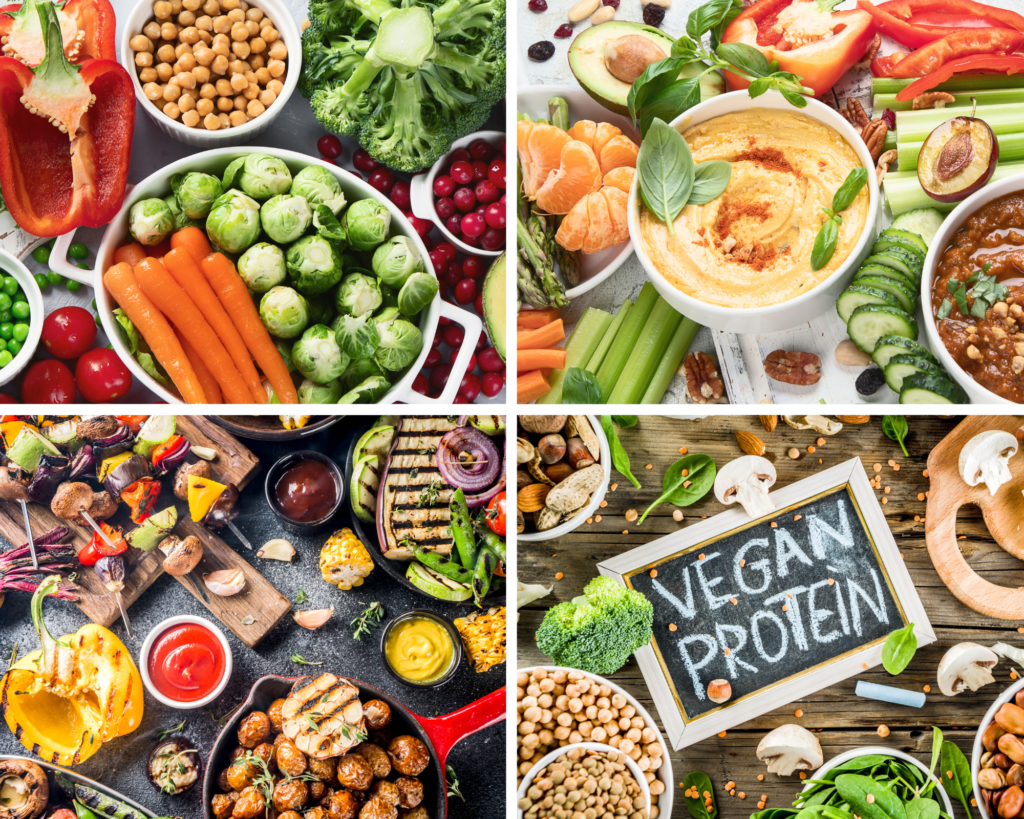
Are you considering starting the keto diet but feeling overwhelmed by the abundance of information out there? Don’t worry, you’re not alone. Many beginners find themselves bombarded with conflicting advice on the “right” way to follow the diet and enter ketosis. But fear not! In this comprehensive guide, we will walk you through everything you need to know to embark on your keto journey with confidence.
Before diving into the nitty-gritty details, let’s start with the basics. The ketogenic diet, or keto diet for short, is a low carb, high fat eating plan that has gained popularity for its potential weight loss and health benefits. By drastically reducing your carb intake and replacing it with fat, your body enters a metabolic state called ketosis. In this state, your body becomes incredibly efficient at burning fat for energy instead of relying on glucose from carbohydrates.
Benefits of the Keto Diet
The keto diet offers a range of potential benefits beyond weight loss. Some of the key advantages include:
1. Weight Loss: Many people turn to the keto diet to shed excess pounds. By reducing carb intake and promoting fat burning, the diet can lead to significant weight loss.
2. Increased Energy Levels: Once your body adapts to using fat as its primary fuel source, you may experience increased energy levels and improved mental clarity
3. Reduced Appetite: The high-fat content of the diet can help keep you feeling full and satisfied, which may lead to reduced hunger and fewer cravings.
4. Improved Blood Sugar Control: By minimizing carb intake, the keto diet can help stabilize blood sugar levels and potentially benefit individuals with diabetes or insulin resistance.
5. Enhanced Brain Function: Ketones, the byproduct of fat metabolism in ketosis, have been shown to provide an alternative energy source for the brain, potentially improving cognitive function.
6. Reduced Inflammation: Some studies suggest that the keto diet may help reduce inflammation in the body, which is linked to various chronic conditions.
Getting Started with the Keto Diet
Now that you have a general understanding of the keto diet, it’s time to dive into the practical aspects of getting started. Here are the key steps to embark on your keto journey:
Step 1: Calculate Your Macros
Macros, short for macronutrients, refer to the three main nutrients your body needs: carbohydrates, protein, and fat. To follow the keto diet effectively, you’ll need to determine the right balance of these macros for your body and goals. The most common breakdown for a standard keto diet is:
- Carbohydrates: Less than 50 grams per day, or ideally below 20 grams for faster ketosis.
- Protein: Moderate intake, typically around 20-25% of your daily calorie intake.
- Fat: The remaining calories should come from healthy fats, making up about 70-75% of your daily calorie intake.
To calculate your specific macros, you can use online calculators or consult with a registered dietitian or nutritionist.
Meal planning is crucial for success on the keto diet. Start by creating a list of keto. friendly foods and recipes that you enjoy. Focus on whole foods that are low in carbs and high in healthy fats. Some staples of the keto diet include:
- Meat and poultry: Beef, chicken, turkey, pork, lamb, etc.
- Fatty fish: Salmon, mackerel, sardines, etc.
- Eggs: A versatile and nutrient-dense source of protein and healthy fats.
- Low carb vegetables: Leafy greens, broccoli, cauliflower, zucchini, etc.
- Healthy fats: Avocado, coconut oil, olive oil, butter, ghee, etc.
- Nuts and seeds: Almonds, walnuts, chia seeds, flaxseeds, etc.
- Full fat dairy: Cheese, cream, yogurt (unsweetened), etc.
Stock your kitchen with these keto friendly ingredients to ensure you have everything you need to prepare delicious and nutritious meals.

Step 3: Stay Hydrated and Mindful of Electrolytes
When following the keto diet, it’s essential to stay properly hydrated and mindful of your electrolyte balance. The body excretes more water and electrolytes on a low carb diet, which can lead to dehydration and imbalances. To combat this, make sure to drink plenty of water throughout the day and consider adding electrolyte rich foods or supplements to your routine. Foods like avocados, leafy greens, and nuts are excellent sources of electrolytes.
Transitioning to a low carb diet can be challenging, especially if you’re used to consuming a high carb diet. To make the process smoother, consider gradually reducing your carb intake over a week or two. This approach can help minimize potential side effects often referred to as the “keto flu,” such as fatigue, headaches, and irritability. As you progressively lower your carb intake, your body will eventually enter ketosis, and you’ll start reaping the benefits of the keto diet.
Step 5: Monitor Your Progress and Adjust as Needed
As you embark on your keto journey, it’s crucial to monitor your progress and make adjustments as needed. Keep track of your food intake, macros, and how your body responds to the diet. Some individuals may need to fine tune their macros or experiment with different food choices to achieve optimal results. Remember that the keto diet is not one size-fits all, and what works for one person may not work for another.

While the keto diet can be highly effective, it’s not without its challenges. Here are some common obstacles you may encounter and practical solutions to overcome them:
Challenge 1: Sugar Cravings
One of the most significant challenges for beginners is dealing with sugar cravings. When you drastically reduce your carb intake, it’s natural to experience cravings for sugary treats. Here’s how you can address this challenge:
- Choose keto-friendly alternatives: Satisfy your sweet tooth with keto friendly treats like sugar free dark chocolate, berries in moderation, or homemade desserts using low carb sweeteners like stevia or erythritol.
- Focus on healthy fats: Eating an adequate amount of healthy fats can help curb cravings and keep you feeling satisfied. Incorporate foods like avocados, nuts, and seeds into your meals and snacks.
- Practice mindful eating: Pay attention to your hunger and fullness cues, and practice mindful eating. Often, cravings can be driven by emotions or boredom, so find alternative activities to distract yourself when cravings strike.
Challenge 2: Dining Out and Social Events
Eating out or attending social events can pose challenges when following a specific diet. However, with a little planning and flexibility, you can still enjoy social occasions while staying true to your keto lifestyle. Here are some tips:
- Research the menu in advance: Check out the restaurant’s menu online and look for keto friendly options. Most establishments are willing to accommodate dietary preferences, so don’t hesitate to ask for modifications.
- Focus on protein and veggies: Opt for dishes centered around protein sources like grilled meats or seafood. Pair them with non starchy vegetables or a salad dressed with olive oil or vinegar.
- Be prepared with keto friendly snacks: If you’re unsure about the available options, bring along some keto friendly snacks, such as nuts or seeds, to keep you satiated until you can find a suitable meal.

On a low carb diet like keto, it can be a challenge to meet your daily fiber requirements. Fiber is essential for digestive health and can help prevent constipation. Here’s how you can ensure adequate fiber intake:
- Choose fiber rich low carb vegetables: Incorporate non starchy vegetables like leafy greens, broccoli, cauliflower, and zucchini into your meals. These vegetables are low in net carbs and high in fiber.
- Include chia seeds and flaxseeds: Chia seeds and flaxseeds are excellent sources of fiber and healthy fats. Sprinkle them on your salads, yogurt, or incorporate them into recipes like keto friendly bread or muffins.
- Consider fiber supplements: If you’re struggling to meet your fiber needs through food alone, you may consider adding a fiber supplement like psyllium husk to your routine. However, always consult with a healthcare professional before starting any new supplements.
Common Mistakes to Avoid on the Keto Diet
As with any diet, there are pitfalls to watch out for when following the keto diet. By avoiding these common mistakes, you can set yourself up for success and maximize the benefits of the diet.
Mistake 1: Not Tracking Macros and Calories
To achieve and maintain ketosis, accurately tracking your macros and calories is essential. Without proper tracking, it’s easy to unknowingly consume too many carbs or exceed your calorie limits, which can hinder progress. Use a food diary or a tracking app to keep tabs on your intake and adjust as needed.
Mistake 2: Overeating Unhealthy Fats
While healthy fats are a crucial component of the keto diet, it’s important to choose quality sources. Opt for monounsaturated and polyunsaturated fats found in foods like avocados, nuts, and fatty fish. Avoid overconsuming unhealthy fats like processed oils, fried foods, and highly processed keto snacks.
Mistake 3: Not Prioritizing Whole Foods
Though there are plenty of keto friendly processed options on the market, it’s essential to prioritize whole foods whenever possible. Whole foods provide a broader range of nutrients and are generally healthier choices. Focus on incorporating nutrient-dense foods like non-starchy vegetables, quality proteins, and healthy fats into your meals.
Mistake 4: Neglecting Electrolyte Balance
As mentioned earlier, the keto diet can impact your electrolyte balance. Neglecting electrolytes can lead to symptoms like fatigue, muscle cramps, and headaches. Ensure you’re getting enough electrolytes by including foods rich in potassium, magnesium, and sodium in your diet. Alternatively, you can consider electrolyte supplements under the guidance of a healthcare professional.
Frequently Asked Questions (FAQs)
To wrap up this comprehensive guide, let’s address some frequently asked questions about the keto diet:
Q1: How long does it take to enter ketosis?
The time it takes to enter ketosis can vary from person to person. Generally, it takes around 2-7 days of strict carb restriction to deplete your glycogen stores and transition into ketosis. However, some individuals may require more time.
Q2: Can I follow a vegetarian or vegan keto diet?
Yes, it is possible to follow a vegetarian or vegan keto diet. However, it can be more challenging as plant-based protein sources tend to contain more carbs. Careful meal planning and supplementation may be necessary to ensure you meet your nutrient needs.
Q3: Are there any potential side effects of the keto diet?
While many people tolerate the keto diet well, some individuals may experience temporary side effects, often referred to as the “keto flu.” These can include fatigue, headaches, dizziness, and digestive issues. These side effects typically resolve within a few days to a couple of weeks.
Q4: Is the keto diet safe for everyone?
The keto diet is generally considered safe for most healthy individuals. However, it may not be suitable for those with certain medical conditions, such as pancreatic disease, liver conditions, or gallbladder issues. If you have any underlying health concerns, it’s essential to consult with a healthcare professional before starting the diet.
Q5: Can I exercise while on the keto diet?
Yes, you can exercise while following the keto diet. However, it’s important to note that your body may require an adjustment period to adapt to using fat as its primary fuel source. During this transition, you may experience a temporary decrease in exercise performance. Once fully adapted, many individuals find that their energy levels and exercise performance improve.
Congratulations! You’ve reached the end of our comprehensive guide to the ultimate keto diet plan for beginners. Armed with this knowledge, you’re now equipped to embark on your keto journey with confidence. Remember to consult with a healthcare professional or registered dietitian before making any significant dietary changes, especially if you have underlying health conditions. Stay consistent, listen to your body, and enjoy the many potential benefits that the keto diet can offer. Here’s to a healthy and successful keto lifestyle!
